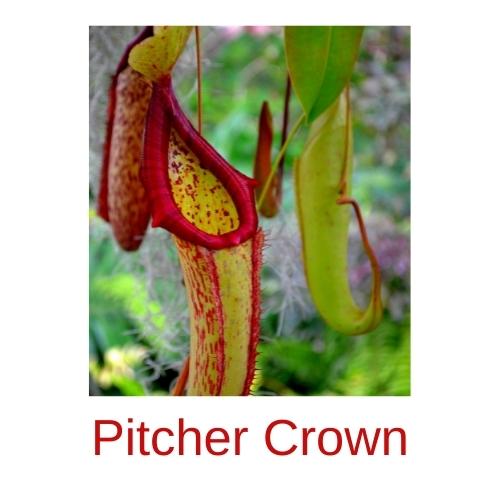Pitcher plants are one of the most interesting and unusual plants around. If you’re a pitcher plant lover, you probably already know a lot about them. But just in case you’re new to the world of pitcher plants, here’s everything you need to know!
What is a fact about pitcher plants?
A pitcher plant is a carnivorous plant that gets its name from the shape of its leaves. It is found in tropical and temperate regions, and each species has different characteristics. One interesting fact about the pitcher plant is that it can capture prey as big as insects, spiders, and even small animals like frogs! This is done with a powerful combination of nectar and enzymes that attract the prey to the trap before trapping them in its mechanism. The digestive fluids found inside the trap allow it to break down whatever falls into them; it’s quite an impressive adaptation!
What is the special structure of the pitcher plant?
The pitcher plant is an amazing species of carnivorous plant that has a unique structure that helps it to survive and thrive. Its pitchers, or central cups, have nectar which is used to lure in insects and provides them with a slippery surface on the inside walls. These creatures often slip into the central cup and are unable to escape.
Digested by enzymes released inside of the pitcher, they provide natural nutrition for the pitcher plant allowing it to grow in areas lacking nutrients. The leaves of this species contain a waxy coating that helps it trap water when in humid climates, further helping the plant stay alive even under arid conditions. This remarkable ability of adaptation makes this incredible species well worth taking a look at if you ever come across one!
How do pitcher plants use their special leaves to live?
Pitcher plants are unique in the plant kingdom, having evolved to grow specialized leaves with pitcher-shaped cups that act as ingenious traps. This adaptation allows them to capitalize on their surroundings and survive without depending on soil nutrition or direct sunlight.
The cups contain a liquid filled with enzymes and bacteria, which dissolve and digest whatever unlucky insects foolish enough to venture inside. The liquified prey provides an essential source of nitrogen for the pitcher plant, allowing it to stay healthy and grow even in nutrient-deficient environments. Amazingly, some pitcher plant species can even produce special scents to lure unsuspecting bugs into their traps!
What is the importance of pitcher plants?
Pitcher plants, or Nepenthaceae, are carnivorous plants that can be found growing in a variety of habitats. These incredibly unique and fascinating organisms offer several benefits to their environments, making them one of the most important parts of any ecosystem.
Pitcher plants act as natural water filters, keep harmful insects from destroying food sources and vegetation, and even act as carbon dioxide traps! They grow in nutrient-poor soils so they play an important role in preserving soil fertility too. Ultimately, pitcher plants make our environment safer by providing homes for wildlife or creating essential habitats for other organisms. Without them, our ecosystem would be very different indeed.
How does a pitcher plant protect itself?
Pitcher plants, insectivorous plant species, are some of the most fascinating organisms on the planet. To protect itself from predators and ensure its survival, this unique species of flower has developed a unique way to capture prey.
By secreting a nectar-like liquid around their edges as well as left in their hollow bodies, pitcher plants use the irresistible scent and taste of their secretion to attract insects. The unsuspecting victims eventually get trapped inside the plant’s body where they become unwilling food sources for these amazing carnivorous plants. Truly an incredible evolution that allows such an unlikely species to survive and thrive in its environment.
How long do pitcher plants live?
It can be hard to tell exactly how long a pitcher plant will live. While some may survive for several decades, others have only been known to last a few years. It’s important to consider environmental factors, such as the amount of sunlight and water available, when determining how long the plant will thrive – too much or too little of either can have a major impact on its lifespan!
With the right care, though, it’s not uncommon for pitcher plants to provide beauty and functionality in gardens for many years. All in all, with proper maintenance pitcher plants, can be enjoyed for quite an extended period of time.
Conclusion
If you’re looking for a carnivorous plant that is sure to impress, the pitcher plant is a great option. With its unique appearance and interesting feeding habits, this plant is something special. Pitcher plants are relatively easy to care for, so even if you’re a beginner gardener, you should be able to keep one healthy and happy. Give this amazing plant a try – you won’t be disappointed!








